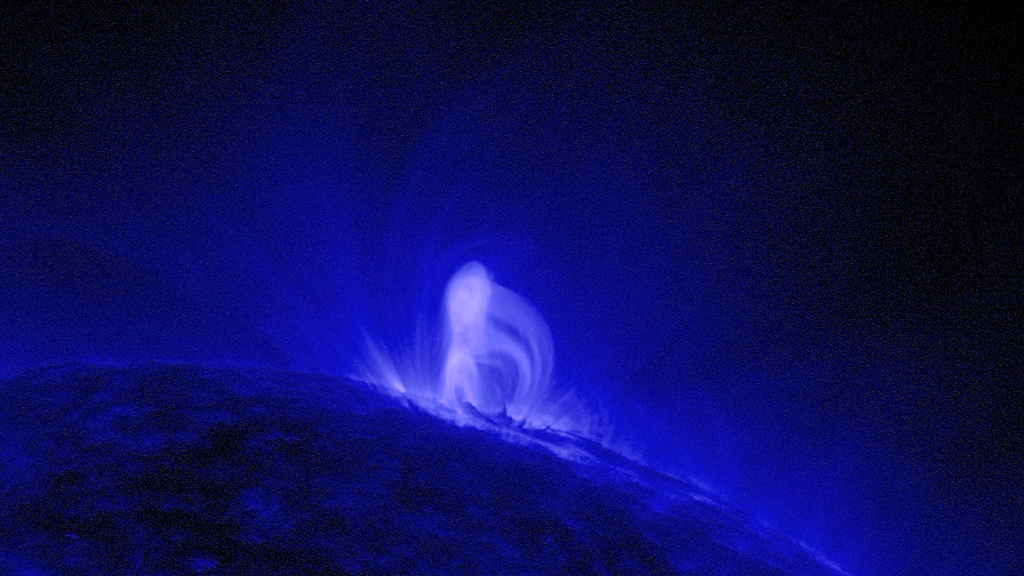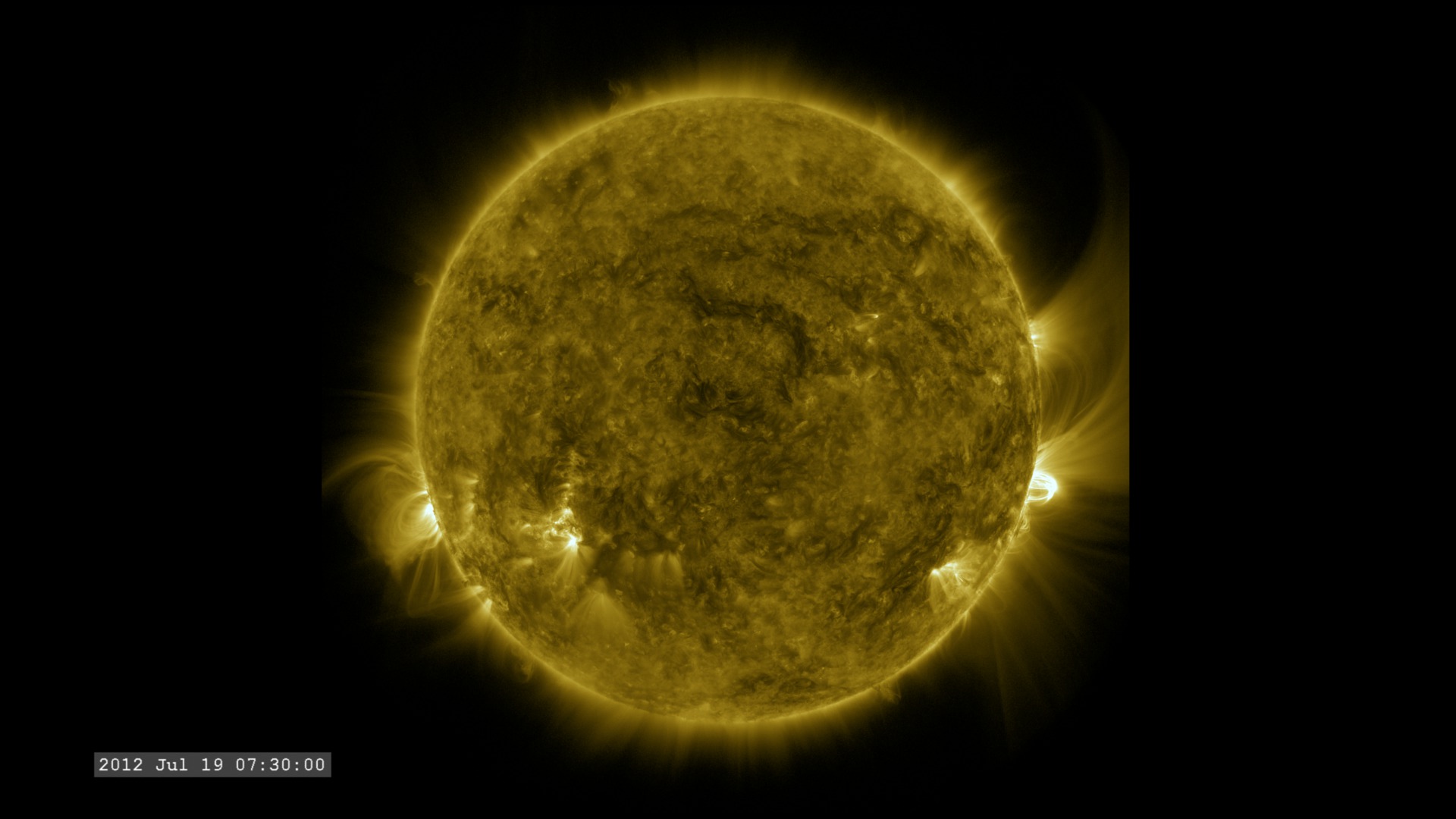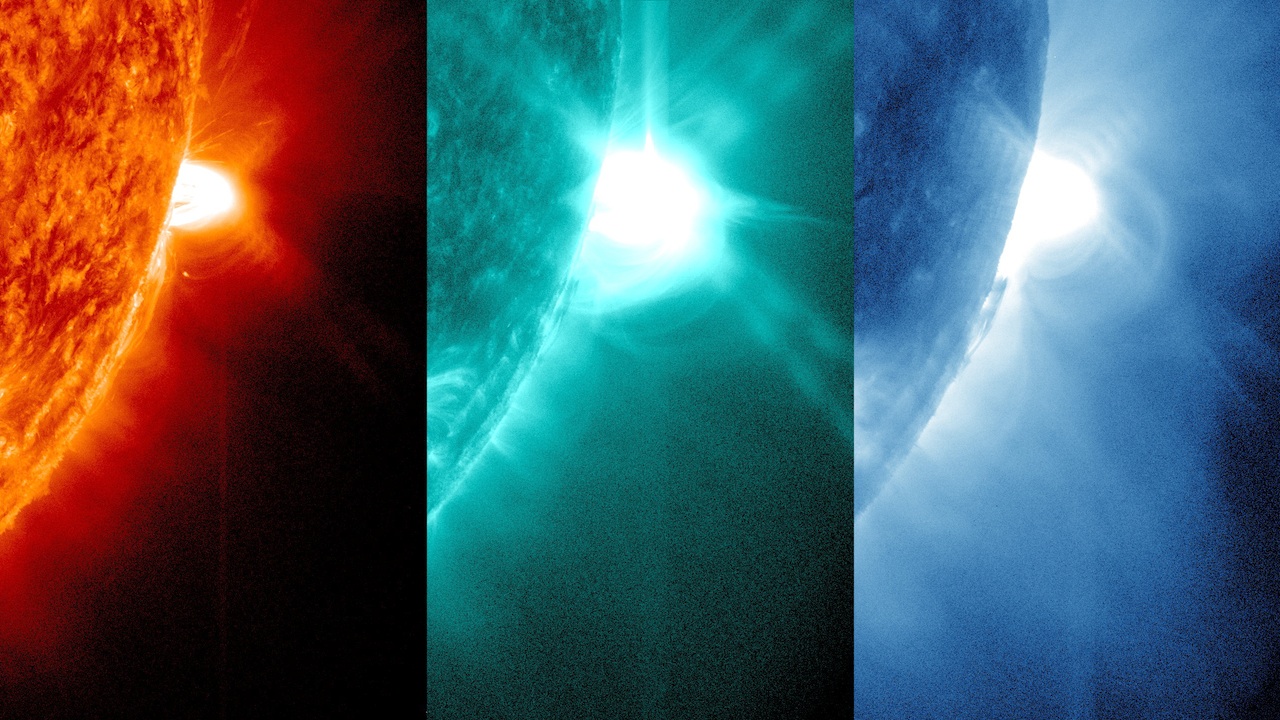SDO Provides First Sightings of How
a CME Forms
On July 18, 2012, a fairly small explosion of light burst off the lower right limb of the sun. Such flares often come with an associated eruption of solar material, known as a coronal mass ejection or CME — but this one did not. Something interesting did happen, however. Magnetic field lines in this area of the sun's atmosphere, the corona, began to twist and kink, generating the hottest solar material — a charged gas called plasma — to trace out the newly-formed slinky shape. The plasma glowed brightly in extreme ultraviolet images from the Atmospheric Imaging Assembly (AIA) aboard NASA's Solar Dynamics Observatory (SDO) and scientists were able to watch for the first time the very formation of something they had long theorized was at the heart of many eruptive events on the sun: a flux rope.
Eight hours later, on July 19, the same region flared again. This time the flux rope's connection to the sun was severed, and the magnetic fields escaped into space, dragging billions of tons of solar material along for the ride — a classic CME.
More than just gorgeous to see, such direct observation offers one case study on how this crucial kernel at the heart of a CME forms. Such flux ropes have been seen in images of CMEs as they fly away from the sun, but it's never been known — indeed, has been strongly debated — whether the flux rope formed before or in conjunction with a CME's launch. This case shows a clear-cut example of the flux rope forming ahead of time.
Watch this video on YouTube.
Solar scientists have long known that at the heart of the great explosions of solar material that shoot off the sun — known as coronal mass ejections or CMEs — lies a twisted kink of magnetic fields known as a flux rope. But no one has known when or where they form. Now, for the first time, NASA's Solar Dynamics Observatory as captured a flux rope in the very act of formation.
For complete transcript, click here.

SDO AIA 131 angstrom standard coloration view of early flux ropes.

SDO AIA 131 angstrom standard coloration view of flux ropes during CME.

SDO AIA 131 and 171 subtraction blended image of early flux ropes.

SDO AIA 131 hue-shifted image of flux ropes during CME.

SDO AIA 131 and 171 difference blended image of flux ropes during CME.

SDO AIA 131 and 171 difference blended image of early flux ropes.

The image on the left shows a series of magnetic loops on the sun, as captured by NASA's Solar Dynamics Observatory on July 18, 2012. The image on the right has been processed to highlight the edges of each loop and make the structure more clear. A series of loops such as this is known as a flux rope, and these lie at the heart of eruptions on the sun known as coronal mass ejections (CMEs.) This is the first time scientists were able to discern the timing of a flux rope's formation.
Blended 131 and 171 angstrom light view of flux rope formation and eruption.
131 only view of flux rope formation and eruption.
High frequency 131 view of flux rope formation.
For More Information
Credits
Please give credit for this item to:
NASA's Goddard Space Flight Center/SDO
-
Animators
- Tom Bridgman (Global Science and Technology, Inc.)
- Scott Wiessinger (USRA)
-
Video editor
- Scott Wiessinger (USRA)
-
Narrator
- Scott Wiessinger (USRA)
-
Producer
- Scott Wiessinger (USRA)
-
Scientist
- Angelos Vourlidas (NRL)
-
Writers
- Karen Fox (ADNET Systems, Inc.)
- Scott Wiessinger (USRA)
Release date
This page was originally published on Thursday, January 31, 2013.
This page was last updated on Wednesday, May 3, 2023 at 1:52 PM EDT.
Missions
This page is related to the following missions:Series
This page can be found in the following series:Tapes
The media on this page originally appeared on the following tapes:-
SDO Helps Solve Longstanding CME Mystery
(ID: 2013015)
Thursday, January 31, 2013 at 5:00AM
Produced by - Robert Crippen (NASA)
Datasets used
-
[SDO]
ID: 168This dataset can be found at: http://sdo.gsfc.nasa.gov/
See all pages that use this dataset -
AIA 131 (131 Filter) [SDO: AIA]
ID: 730This dataset can be found at: http://jsoc.stanford.edu/
See all pages that use this dataset
Note: While we identify the data sets used on this page, we do not store any further details, nor the data sets themselves on our site.


